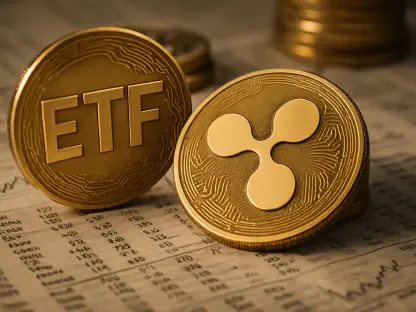The subject of the article revolves around the trend of U.S. private equity firms and investors purchasing Italian football clubs and investing in stadiums. This newfound interest is reshaping the landscape of Italian football, impacting Serie A, B, and C teams while also contributing to urban regeneration projects through stadium modernization.
Increased U.S. Investment in Italian Football
The Surge in Acquisitions
Driven by strategic, long-term growth plans and the potential for high returns, U.S. private equity firms are increasingly acquiring Italian football clubs. These acquisitions are fundamentally altering the dynamics of Italian football, bringing new financial resources and a more structured approach to the sport’s management. Investors are drawn to the unique combination of passionate fan bases, historic clubs, and the opportunity to capitalize on the underdeveloped commercial potential of Italian football. This trend has seen an upsurge in the value and competitiveness of these clubs, positioning them as attractive assets.
Furthermore, the acquisition of Italian football clubs is backed by the promise of lucrative returns through media rights, sponsorship deals, and the expanding global popularity of football. U.S. investors recognize the untapped potential in Italy’s football market and aim to leverage their expertise in sports management and technology to enhance club operations and profitability. This influx of capital contributes significantly to the modernization of clubs, allowing them to upgrade facilities, improve player development programs, and increase their competitive standing both domestically and internationally.
Key Financial Strategies
Investors are focusing on renovating outdated infrastructure and transforming stadiums into smart, revenue-generating venues using advanced technology. By deploying innovations such as high-speed internet, digital ticketing systems, and enhanced fan experiences, these modernized stadiums can attract more visitors and generate higher revenue. The integration of sustainable practices and state-of-the-art facilities also aligns with global trends toward eco-friendly sports venues, enhancing the overall appeal and financial viability of these projects.
Additionally, U.S. private equity firms are capitalizing on fiscal incentives like super-depreciation deductions and tax credits tied to sports sponsorships. These financial strategies not only reduce operational costs but also maximize the profitability of their investments. By implementing direct-to-consumer business models, clubs can tap into new revenue streams from digital merchandise sales, exclusive content subscriptions, and interactive fan engagement platforms. These initiatives are transforming football clubs into multifaceted entertainment hubs, attracting a broader audience and increasing brand loyalty.
Major Examples of Investments
Stadio Meazza Renovation
Internazionale Milano (Inter Milan) and Associazione Calcio Milan (AC Milan) are collaborating to construct a modern, sustainable stadium with backing from U.S.-based private equity investors, such as Oaktree Capital and RedBird Capital. The iconic Stadio Meazza, commonly known as San Siro, has been shared by these rival teams since 1947, and its upcoming renovation marks a significant milestone in Milan’s urban landscape. The new stadium promises substantial urban regeneration benefits, including improved public infrastructure, increased tourism, and enhanced local economic opportunities.
The project, supported by substantial financial investments, is set to redefine the fan experience with cutting-edge amenities and eco-friendly initiatives. This transformation is not only about boosting revenue but also about revitalizing the city of Milan and its surroundings. The collaboration between two of Italy’s most storied football clubs on this ambitious project highlights the strategic vision and commitment of U.S. investors in elevating Italian football to global standards.
Hellas Verona FC Acquisition
Presidio Investors’ acquisition of Hellas Verona FC is viewed as a strategic move to bolster the team’s financial health and performance amid challenges to avoid relegation from Serie A. Hellas Verona faces substantial pressure, as relegation would result in severe revenue losses from TV deals, sponsorships, and matchday income. Presidio’s investment, advised by Hogan Lovells, aims to enhance the club’s financial stability and operational effectiveness, ensuring that it remains competitive within Serie A—a vital factor for maintaining lucrative commercial agreements and fan support.
This acquisition is also part of a broader trend where U.S. private equity firms see value in rescuing financially troubled clubs and turning them around using disciplined management practices and substantial financial backing. The focus is on not just immediate performance improvements but on laying foundations for sustainable long-term growth. Through strategic player acquisitions, enhancements to training facilities, and optimization of commercial partnerships, Hellas Verona is positioned to secure its place in Serie A and become a more influential entity within Italian football.
Broader Trends and Implications
Diversified Investment Approach
U.S. investments are not limited to top-tier clubs like AC Milan and Inter Milan; lower-league teams in Serie B and Serie C also present affordable entry points with potential for profitable returns through promotion. These clubs offer attractive opportunities for investors seeking to capitalize on undervalued assets with significant growth potential. The lower acquisition costs and the possibility of elevation to higher leagues present a compelling investment proposition. Clubs that achieve promotion can experience substantial increases in revenue from sponsorships, broadcasting rights, and matchday proceeds.
Such investments in lower-league teams also contribute to the overall development of Italian football, fostering a more competitive environment across all divisions. This approach helps build a robust foundation for the sport’s long-term growth, ensuring that talent development and fan engagement are consistent across the hierarchy of leagues. The strategic acquisition of these clubs by U.S. investors reflects a comprehensive vision for transforming Italian football into a globally competitive landscape, characterized by financial stability and operational excellence.
Comparative Insights from England’s Premier League
Marc Trottier of Bryan Cave Leighton Paisner draws parallels to the increased U.S. ownership of English Premier League clubs, comparing the competitive market dynamics in both regions. The English Premier League, known for its massive global following and substantial revenue generation, has seen significant U.S. investment over the years, with clubs like Arsenal, Chelsea, Liverpool, Manchester United, and Everton experiencing transformative changes under U.S. ownership. Trottier highlights that similar trends are unfolding in Italian football, driven by the same underlying principles of strategic growth and financial acumen.
The comparison underscores the competitive nature of football club acquisitions, where U.S. private equity firms are actively seeking opportunities to invest in clubs that offer high returns and market potential. Trottier’s insights emphasize that the success observed in the Premier League could serve as a model for Italian football, leveraging structured investment approaches to enhance club profitability, global reach, and competitive strength. The dynamics in Italy are set to evolve similarly, with U.S. investors importing tested strategies and best practices from their Premier League experiences, aiming to replicate similar success.
Financial and Operational Enhancements
Institutional Investor Contributions
PwC’s report highlights that institutional investors lead efforts to finance stadium upgrades, direct-to-consumer business models, and international expansion with structured, robust financial practices. These contributions are pivotal in transforming clubs, ensuring that they possess the financial and operational capabilities to compete at the highest levels. The implementation of sophisticated business models enables clubs to generate diverse revenue streams, ranging from digital content to international merchandising and sponsorship deals tailored to global markets.
The report further elucidates that such investments are essential for enhancing the overall infrastructure and competitive environment of Italian football. They facilitate necessary upgrades to training facilities, technological advancements in stadiums, and improvements in player welfare and development programs. These structured, long-term financial practices set the stage for sustained growth, positioning Italian clubs advantageously within the international football arena. The involvement of institutional investors underscores a meticulous approach to achieving financial stability and performance excellence, critical for the sport’s evolution in Italy.
Tax Benefits and Optimizations
U.S. private equity-backed clubs benefit from various tax incentives, operational cost deductions, player wages, and sponsorship deal optimizations, contributing to financial stability and growth. These financial advantages stem from regulatory frameworks that incentivize investments in sports, including provisions for super-depreciation and tax credits tied to sponsorships. The ability to deduct substantial expenses related to stadium upgrades and player wages offers a significant boost to the profitability of these clubs.
Optimizing sponsorship and advertising deals further enhances revenue, with naming rights and brand partnerships playing a crucial role in elevating financial outcomes. The structured approach to leveraging these benefits ensures that financial practices are aligned with growth objectives, promoting sustainable profitability. By integrating tax-efficient strategies and optimizing operational costs, U.S. investors are effectively transforming the financial landscape of Italian football, making it more resilient, efficient, and poised for long-term success.
Urban Regeneration Benefits
Transformative Stadium Modernizations
Investment in stadium modernization is not only enhancing athletic facilities but also driving urban regeneration projects, promising significant benefits for the cities involved. Modern stadiums serve as multi-functional venues that can host a variety of events, attracting visitors and boosting local economies. This transformative approach extends beyond sports, fostering community engagement, revitalizing surrounding areas, and providing new commercial opportunities for local businesses. The environmental sustainability initiatives incorporated in these projects further contribute to creating healthier and more attractive urban environments.
The benefits of these transformations are manifold, including improved infrastructure, enhanced public services, and increased tourism. Cities with modernized stadiums experience a surge in economic activities, driven by higher visitor numbers and international attention. These projects act as catalysts for broader urban development, aligning sports investments with municipal growth objectives. The backing from U.S. investors ensures that such initiatives are well-funded and strategically managed, maximizing their positive impact on local communities and urban landscapes.
Strategic Vision for Future Growth
U.S. private equity firms and investors are increasingly buying Italian football clubs and investing in stadiums. This growing trend is transforming Italian football across Serie A, B, and C teams. By infusing capital into these clubs and updating stadiums, American investors are not only enhancing the teams’ competitive edge but also contributing to urban development. The modernization of stadiums plays a significant role in these investments, as it leads to improvements in infrastructure and helps attract more fans, boosting local economies. This strategic move by American investors is reshaping the Italian football landscape and promoting the overall growth of the sport in the country. Additionally, these efforts aim to revive and energize communities through urban regeneration projects, adding a socio-economic dimension to their investments. As more U.S. investors recognize the potential of Italian football, the trend appears set to continue, ushering in a new era of prosperity for the sport in Italy.









